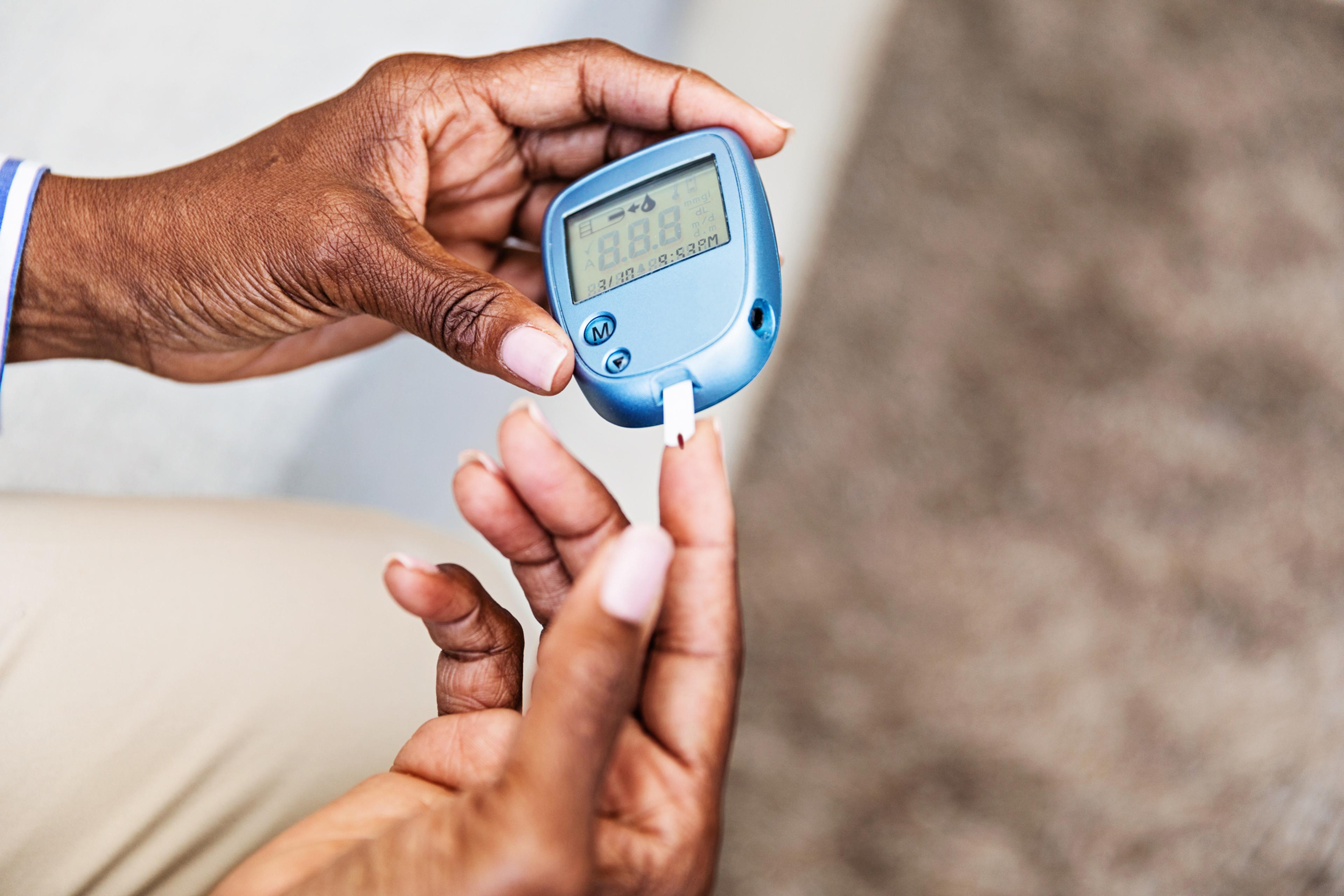How to Choose a Glucose Monitor
Amy Barczy
| 4 min read
Amy Barczy is a former brand journalist who authored content at Blue Cross Blue Shield of Michigan. Prior to her time at Blue Cross from 2019-2024, she was a statewide news reporter for MLive.com. She has a decade of storytelling experience in local news media markets including Lansing, Grand Rapids, Holland, Ann Arbor and Port Huron.

If you are managing a diagnosis of diabetes, your health care provider will likely advise you that you need to monitor your blood sugar levels at home.
The best way to do this is using a glucose monitor. A glucose monitor is a device that you can use to test the levels of sugar, or glucose, in your blood.
Blood glucose levels can change during the day depending on several factors including what you eat, what medications you take, and your level of activity. It’s important to work with your health care provider to understand how often you should check your blood glucose levels at home.
Most glucose monitors work the same way: a test strip is inserted into the device. Then, you use a special device called a lancet to poke the end of your fingertip so a drop of blood comes out. Then you touch the test strip to the blood and wait for the machine to give you a reading.
Here are five questions to ask yourself when choosing a glucose monitor.
1. What does my insurance cover?
To health insurance companies, glucose monitors and supplies like test strips and lancets are considered durable medical equipment. First, you’ll need a prescription for the equipment. Then, you need to know who the preferred Durable Medical Equipment supplier is to fill that prescription.
Blue Cross Blue Shield of Michigan and Blue Care Network members can find a supplier by using the Find a Doctor tool on bcbsm.com or our mobile app, and search for durable medical equipment.
You might also want to check your plan benefits. The best way to get information about your plan is to log in to your account. You can do that using our website or through our mobile app.
Once you log in:
- Go to My Coverage, select Medical and then What’s Covered.
- Look for or search for durable medical equipment. Some members may find it in the Other Covered Services category.
For additional help, members can call the number on the back of their Blue Cross ID card.
2. How easy is it to use?
Make sure you’re choosing a device that makes testing as simple and easy to understand as possible. Ask yourself: can I read the screen? Can I comfortably hold the meter and the test strips? How easy is it to get the drop of blood onto the test strip?
There are newer alternative glucose monitors on the market that you may want to discuss with your health care provider if a traditional glucose monitor is difficult for you to use. There are alternative site monitors that allow blood samples to be taken from other areas, like the arm, the thigh or the palm of the hand that may be less painful than a finger – but the results may not be as accurate.
Continuous Glucose Monitors (CGMs) use a sensor placed under the skin to measure blood sugar levels and can send the readings to a smart phone, smart watch or other recording device. While these devices can alert you immediately if your levels are too low or too high, they also may carry a higher cost, require frequently replacing of the sensor and may need to be checked against a traditional finger-poke device.
Talk with your health care provider about the device that’s best for you.
3. Does it have special features?
Do you need a device with a bigger screen or one that’s illuminated so you can see it better? Do you need larger or simpler buttons, or larger test strips? Shop for a glucose monitor that has the features you need to be able to use it correctly.
4. How does the device store and share information?
Talk with your doctor about the types of information you need to receive from a glucose monitor. Some glucose monitors can keep a log for each test, including time, date, and results, as well as trends over time. Other monitors can deliver real-time updates to health care providers via a smart phone app. Additionally, some monitors may allow you to download your readings to a computer and then email or print the results for your doctor to review.
5. Is there support available?
Make sure you can easily find information about how to use your glucose monitor. Consider whether the instructions on how to use the glucose monitor are easy to follow, and if there is a customer service number for the manufacturer in case you encounter any issues with the device.
Whether you are switching to a new glucose monitor or choosing one for the first time, take the time to research your options and talk with your health care provider about your needs. Your doctor is your best resource when evaluating your options to manage your diabetes.





